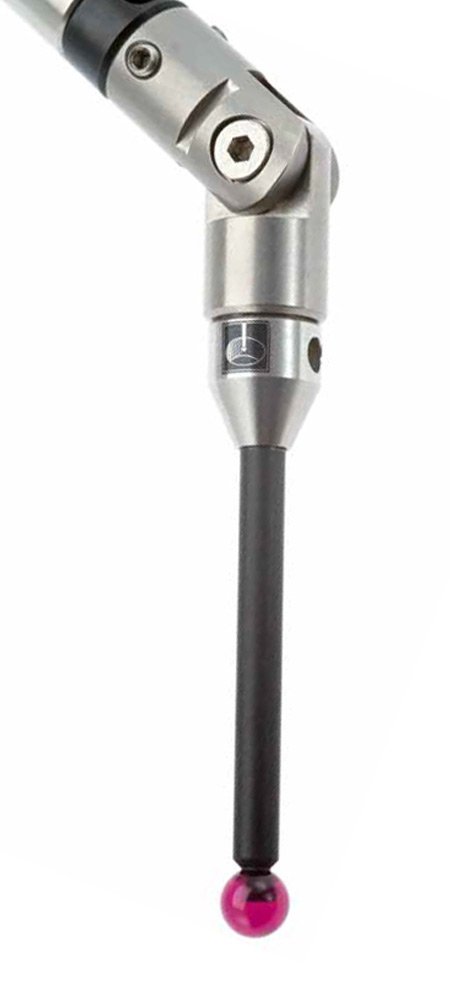


At measuring with a switching measuring sensor the machine uses the probe holder to accommodate measuring points on the surface of the workpiece. With each touch there is a point generated, based on position values, defined in X, Y and Z. From these features the size, shape and position can be calculated. A scanning probe takes in contrast, continuously measured values on the surface of a workpiece. A sophisticated software uses this data to size, position and shape the features to calculate the workpiece. When selecting the probe holder, it must be ensured that it is is best suited for the measurement application.


Gerade Tastereinsätze Gerade Tastereinsätze sind die einfachsten und am häufigsten verwendeten Tastereinsatztypen. Sowohl abgesetzte als auch konische Schäfte sind lieferbar. Tastereinsätze mit konischen Schäften bieten eine bessere Stabilität bei einfach zugänglichen Werkstücken. Tastereinsatzkugeln werden aus Rubin, Siliziumnitrid, Zirkonoxid, Keramik oder Hartmetall hergestellt. Die Halter und Schäfte sind ebenfalls in verschiedenen Materialien lieferbar – Titan, Hartmetall, Edelstahl, Keramik und Kohlefaser. Sternförmige Tastereinsätze Tastereinsatzkonfigurationen mit mehreren fest montierten Tastereinsätzen. Die Tastereinsatzkugeln werden aus Rubin, Siliziumnitrid oder Zirkonoxid hergestellt. Eigene Sternkonfigurationen können mit Haltern, die bis zu 5 Tastereinsatzkomponenten aufnehmen, konstruiert werden. Scheibenförmige Tastereinsätze Bei diesen Tastereinsätzen handelt es sich um „Sektionen“ hochpräziser Kugeln, die in verschiedenen Durchmessern und Stärken erhältlich sind. Die aus Stahl, Keramik oder Rubin hergestellten Scheiben werden an einem Gewindezapfen befestigt. Vorteile dieser Tastereinsätze sind die vollständige Drehbarkeit und die Möglichkeit, zusätzlich einen zentral positionierten Tastereinsatz einzufügen. Diese Tastereinsätze sind daher besonders flexibel und einfach einzusetzen.
The choice of the ball material depends on the measurement strategy and the workpiece material. The quality rating of the ball must be observed! Zirconia In case of the special surface of this material, it is ideal for scanning workpieces with an abrasive surface, e.g. cast iron components. Ruby Ruby is one of the hardest known materials after the diamond. Therefore it is an ideal ball material for most standard applications. silicon nitride Silicon nitride is nearly similar in terms of technical properties to ruby. It is a ceramic material with a exceptional wear resistance, which results in a perfect ball and its surface can be polished extremely smooth. Aluminium does not attract silicon nitride. For this reason the material is ideal for scanning aluminum surfaces, because, unlike ruby, the aluminum particles of the surface do not deposit on the ball.
